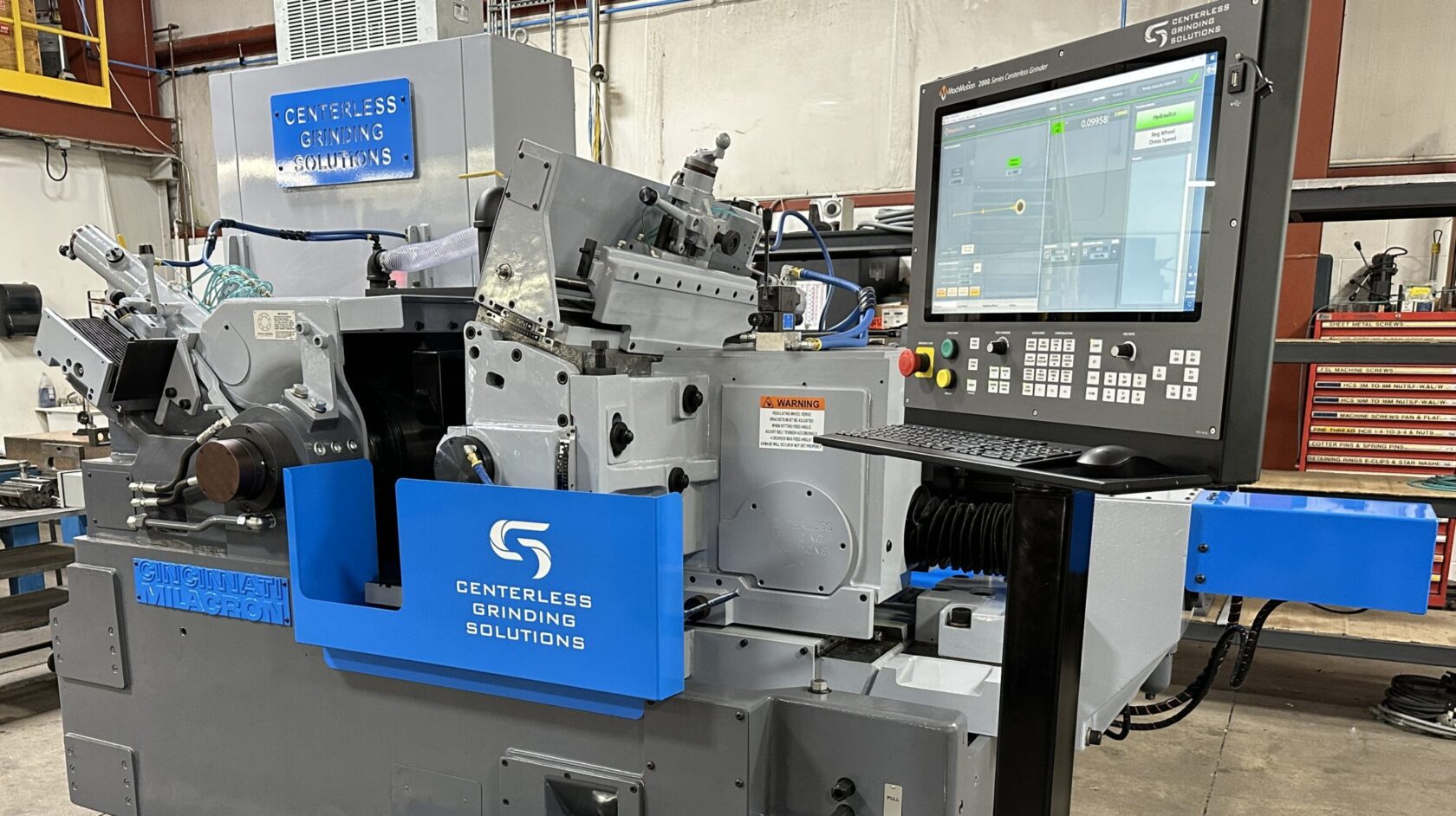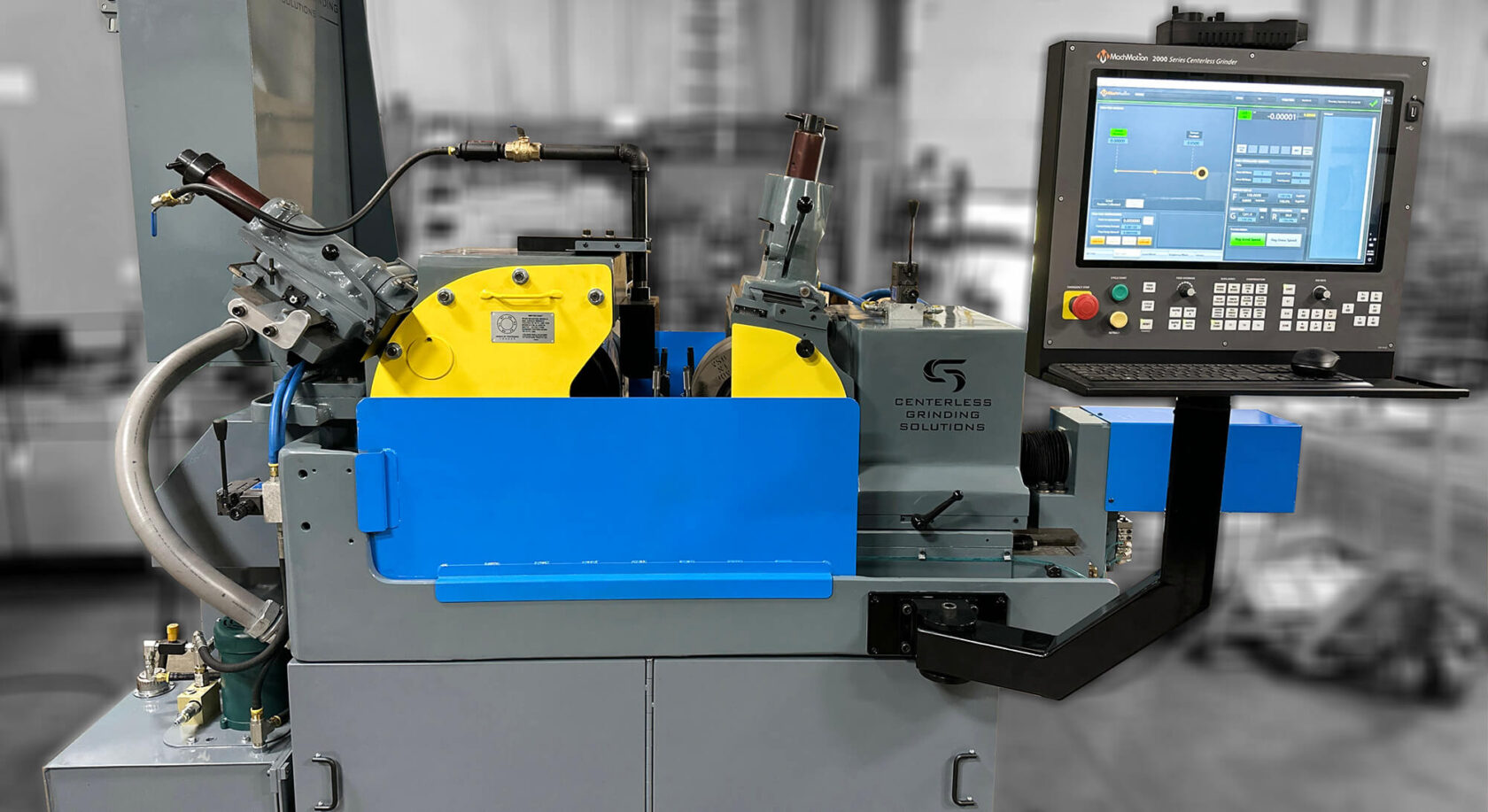
The Impact of Machine Alignment and Setup on Grinding Quality
Poor machine alignment costs manufacturers thousands in scrapped parts and rework. A single misaligned work rest blade can create dimensional errors exceeding 0.0001 inches, turning profitable production runs into costly quality nightmares. Machine alignment centerless grinding operations require precision setup procedures to eliminate these expensive mistakes and achieve consistent centerless grinding quality.
Even minor alignment deviations affect part geometry, surface finish, and dimensional accuracy across entire production batches. Understanding the critical relationship between alignment parameters and grinding outcomes enables operators to optimize performance while minimizing costly rework and maintaining competitive manufacturing standards.
Understanding Centerless Grinding Alignment Fundamentals
Centerless grinding alignment involves positioning the work rest blade, regulating wheel angle, and grinding wheel to ensure optimal workpiece support and consistent grinding quality throughout production runs.
The three primary alignment considerations include work rest blade height, regulating wheel angle, and grinding wheel positioning relative to the workpiece centerline. These components create the “grinding triangle” that determines workpiece stability during processing.
Work rest blade alignment serves as the foundation for all precision grinding setup operations, providing stable workpiece support while maintaining proper contact with both grinding wheels. The geometric relationship between these components directly impacts grinding accuracy optimization and overall production quality.
5 Signs Your Centerless Grinder Needs Alignment
Recognizing alignment problems early prevents costly quality issues and production delays. Watch for these warning signs:
- Consistent taper generation across multiple parts
- Surface finish variations along part length
- Dimensional drift during production runs
- Increased vibration during grinding operations
- Higher scrap rates despite consistent material quality
Work Rest Blade Height: Foundation of Grinding Accuracy
Optimal Height Positioning for Different Applications
Work rest blade height directly influences grinding forces, part stability, and geometric accuracy during centerless grinding operations. Setting blade height at workpiece centerline provides maximum stability for most applications, though specific requirements may necessitate height adjustments.
Above-center positioning (0.0005″ to 0.002″ high) can improve surface finish on soft materials by reducing grinding forces and minimizing workpiece deflection. This centerless grinder calibration technique works particularly well for thin-walled tubes or delicate components.
Below-center positioning may benefit applications requiring aggressive stock removal or improved roundness correction. However, below-center setups typically reduce workpiece stability and may cause vibration issues that degrade surface quality.
Step-by-Step Height Measurement Procedures
Accurate work rest blade height measurement requires precise tools and consistent quality control grinding procedures:
- Use height gauges with 0.0001″ resolution for adequate precision
- Establish consistent measurement points for repeatability
- Verify with master parts of known diameter
- Document measurements for setup standardization
- Check alignment before each production run
Master parts enable blade height verification without relying solely on measurement tools. Running master parts through the grinding cycle reveals height-related issues that might not be apparent through static measurement alone.
Regulating Wheel Angle: Controlling Feed Rate and Part Rotation
Angle Selection for Optimal Throughput
Regulating wheel angle determines both workpiece feed rate and rotational speed during machine setup procedures. Typical angles range from 1° to 6°, with 2-3° providing optimal balance between productivity and surface finish for most applications.
Smaller angles (1-2°) produce slower feed rates that enable superior surface finishes and tighter dimensional control. These precision grinding setup parameters work well for components requiring exceptional surface quality.
Larger angles (4-6°) increase throughput by accelerating workpiece feed rates but may compromise surface finish quality. High-production applications often benefit from larger angles when surface requirements permit faster processing.
Angular Precision and Adjustment Methods
Regulating wheel angle adjustments require precision measurement and systematic procedures. Sine bars or angle blocks provide reference standards for verifying angular settings during machine setup and maintenance procedures.
Digital angle measurement systems offer improved accuracy and repeatability compared to mechanical methods. These systems eliminate human error while providing permanent records of setup parameters for quality documentation.
Grinding Wheel Position and Dressing Impact on Quality
Wheel Face Positioning Relative to Workpiece
Grinding wheel position affects contact area, grinding forces, and heat generation during centerless grinding operations. Proper wheel positioning ensures uniform contact pressure while minimizing thermal damage and maintaining dimensional accuracy grinding standards.
Wheel face alignment must remain parallel to the workpiece axis to prevent taper generation or uneven stock removal. Even slight angular misalignment can create systematic dimensional errors affecting entire production batches.
Wheel penetration depth influences grinding forces and surface finish quality. Excessive penetration may cause workpiece deflection or thermal damage, while insufficient penetration reduces grinding efficiency.
Dressing Effects on Grinding Performance
Wheel dressing condition directly impacts grinding quality, with fresh dressing typically providing optimal surface finish and dimensional accuracy. Regular dressing intervals prevent wheel loading and maintain consistent grinding characteristics throughout production runs.
Dressing feed rates and depth of cut affect wheel surface topography, influencing grinding forces and heat generation. Lighter dressing passes produce smoother wheel surfaces that generate superior surface finishes but may reduce grinding efficiency.
Frequently Asked Questions About Centerless Grinding Alignment
How often should centerless grinder alignment be checked? Check alignment daily for critical applications, weekly for standard production runs, and after any machine maintenance or wheel changes.
What causes centerless grinding taper problems? Angular misalignment between grinding wheel and workpiece centerline creates taper. Verify wheel face alignment and work rest blade positioning to eliminate taper issues.
Why is work rest blade height critical for grinding quality? Blade height directly affects part roundness, surface finish, and dimensional consistency. Incorrect height immediately impacts grinding accuracy optimization across production runs.
How do I know if my regulating wheel angle is correct? Proper angle produces consistent feed rates and surface finish. Excessive vibration or poor surface quality often indicates incorrect angular settings.
What measurement tools are required for alignment verification? Height gauges with 0.0001″ resolution, dial indicators, sine bars, and master parts provide adequate precision for most centerless grinding applications.
Alignment Verification and Measurement Techniques
Precision Measurement Tools and Procedures
Accurate alignment verification requires appropriate measurement tools and systematic procedures ensuring repeatability between operators. Dial indicators with magnetic bases provide versatile alignment checking capabilities for most applications.
Height gauges enable precise work rest blade positioning while providing permanent reference points for future setups. Consistent measurement procedures ensure alignment repeatability when changing between different part configurations.
Coordinate measuring machines (CMMs) offer comprehensive alignment verification for critical applications requiring exceptional accuracy. CMM measurements provide detailed documentation of alignment parameters and enable systematic improvement.
Alignment Documentation and Standardization
Setup procedures should include detailed alignment specifications and measurement requirements ensuring consistency between operators and production shifts. Standardized setup sheets eliminate guesswork while providing clear guidance for achieving optimal alignment.
Photo documentation of proper alignment positions helps operators visualize correct setup configurations. Visual references supplement numerical specifications and reduce setup errors caused by misinterpretation.
Troubleshooting Common Alignment-Related Quality Issues
Identifying Problems Through Part Inspection
Systematic part inspection reveals alignment-related problems that might not be apparent during machine setup procedures. Consistent dimensional patterns often indicate specific alignment issues that can be corrected through targeted adjustments.
Common alignment problems and their symptoms:
- Taper generation: Angular misalignment between grinding wheel and workpiece
- Surface finish variations: Work rest blade wear or improper height setting
- Dimensional drift: Regulating wheel angle problems or foundation issues
- Part vibration marks: Incorrect blade height or wheel positioning
Cost of Poor Alignment vs. Proper Setup
Poor alignment creates significant hidden costs through increased scrap rates, rework requirements, and production delays. Proper machine alignment centerless grinding setup prevents these expensive quality issues while improving overall equipment effectiveness.
Investment in precision alignment procedures typically pays for itself within weeks through reduced scrap and improved productivity. Professional alignment services ensure optimal setup while providing training for internal maintenance staff.
Establishing Sustainable Setup Procedures for Quality Control
Preventive Maintenance for Alignment Stability
Regular maintenance procedures help maintain alignment stability and prevent gradual drift affecting grinding quality over time. Scheduled alignment verification prevents small deviations from becoming significant quality problems while maintaining production consistency.
Machine foundation inspection should include checking for settling, cracking, or structural issues that might affect alignment stability. Foundation problems can cause alignment drift that cannot be corrected through normal setup procedures.
Recommended maintenance schedule:
- Daily: Visual alignment checks and basic measurements
- Weekly: Comprehensive alignment verification
- Monthly: Foundation and structural inspection
- Quarterly: Professional alignment assessment
Training and Skill Development
Operator training programs should emphasize the relationship between alignment parameters and grinding quality outcomes. Understanding these relationships enables operators to make intelligent adjustments rather than following procedures mechanically.
Hands-on practice with alignment procedures builds operator confidence and competence in setup operations. Practical experience supplements theoretical knowledge and develops judgment necessary for optimizing setup parameters.
Professional Centerless Grinding Alignment Services
When alignment issues exceed internal capabilities, professional services provide expert solutions and training. Centerless Grinding Solutions offers comprehensive alignment services, including precision measurement, adjustment procedures, and operator training programs.
Our experienced technicians understand the critical relationships between alignment parameters and grinding quality outcomes. We provide machine rebuilding services that restore optimal alignment while upgrading outdated components for improved performance.
For businesses requiring ongoing support, our replacement parts program ensures access to precision alignment tools and measurement equipment necessary for maintaining optimal setup procedures.

